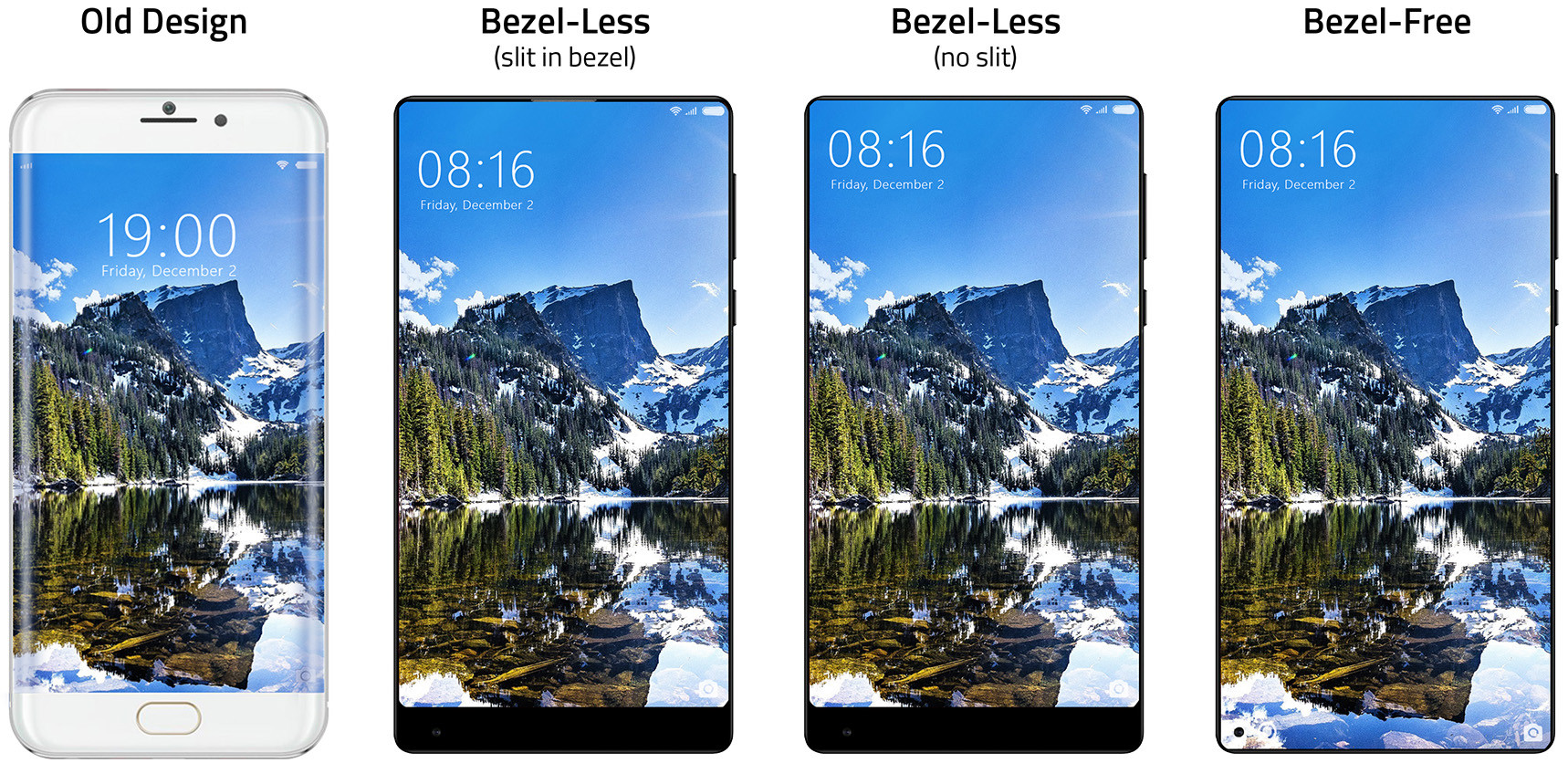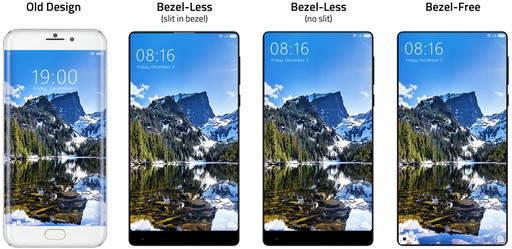Like an aging athlete who finds it challenging to keep winning medals every season, the smartphone space has been in a bit of a rut in recent years. After Apple launched the iPhone in 2007 and revolutionized mobile phones, consumers went wild for these devices, which were improved frequently. Smartphones became thinner, bigger, more powerful, with better cameras and cool additions like virtual digital assistants and mobile payments. But other than exploding batteries, it seems that smartphone hardware hasn't gotten much attention lately.
In fact, essential smartphone design has been pretty much stagnant since 2007. That was almost 10 years ago, and while there have been minor tweaks to the design of the front panel, the basic template remains largely unchanged.
Most of the front-facing components are located at the top area of the phone, like the earpiece, ambient light sensor, proximity sensor and front-facing camera. The bottom area is typically used for the home button (both a physical button as well as virtual touch home button) or sometimes, nothing at all. The center area is always consumed by the touch panel. Thus, today's smartphone design has been for the most part a standard recipe, which means it's become staid and boring.
None too soon, all of this will be changing in 2017. Fueled by serious technological advances developed by companies that support smartphone OEMs, this ubiquitous device will be reborn next year. The most innovative smartphones will soon reveal a new paradigm in phone design that is already getting attention from consumers starved for innovative features and whiz-bang capabilities.
Here are the three big breakthroughs we should expect in 2017.
1. The "full-screen" race begins
In 2017, we will start to see high-end phones from top providers come out with a full-screen front. Chinese manufacturer Xiaomi — called "the Apple of China," which sold 73 million phones in 2015 — disrupted the market in October with its new Mi Mix phone that incorporated, for the first time, an almost bezel-less design that makes possible an extension of the usable screen to just over 90% of the total front surface area of the phone. In 2017, we expect to see other OEMs follow suit by duplicating this design in high-end phones. By 2018, all major OEMs such as Apple, Samsung and others should come out with phones that follow the full-screen model.
2. The camera, proximity sensor, light sensor and speakers relocated or removed
Accompanying the full-screen race are big changes for key components, which will be moving from the top front face area of the phone to new locations on the device, or simply removed. It's about time, since the camera, speaker, proximity sensor and ambient light sensor have been on the phone's top front screen since the first smartphone. To consumers, this is part of an old-fashioned look that is overdue for updating.
In 2017, we anticipate that the proximity sensor will be replaced by software utilizing ultrasound. This removal of proximity sensor delivers an increase in internal real estate for larger speakers (if desired) while eliminating the ugly black holes that currently take up valuable screen space on the phone's front face. Cameras will also move to other locations of the phone in order to increase the screen.
3. Fingerprint sensing advances
A trend that will begin in late 2017 will be "in-screen" or "bottom-screen" fingerprint sensing, which will replace the "press exactly here" type of fingerprint sensor. The dynamic behind this is the replacement of physical buttons with capacitive-touch or pressure-sensitive touch technologies, thus in-screen fingerprint sensing is a logical next step. This is a welcome leap forward, with unlocking the phone achieved simply by touching the screen anywhere, turning always-on fingerprint sensing into the new normal.
And beyond 2017…
Enticing new products that make consumers want to upgrade their phones more frequently are critical to continue and sustain market growth. There are a few advancements in technology that are fueling the above breakthroughs appearing in 2017 and beyond. Consider what is happening to the proximity sensor, which uses hardware infrared technology operating through one of the holes on the top front screen to detect when the phone is placed near the head during a call to prevent accidental hang ups.
Replacing this technology with ultrasound technology lets the phone detect movement from behind the screen or elsewhere, eliminating the need for holes, working better in all conditions and increasing available phone real estate.
It's clear that consumers want and will pay a premium for state-of-the-art phones. For example, Xiaomi's new Mi Mix — only available in China today — cost up to $590, sold out in seconds and has reportedly been sold on the black market for as much as 10 times the original price. The company's attention to adopting leading-edge technology and creating an innovative design has positioned Xiaomi as a leader in the market while at the same time causing a disruption and awakening the desire for a new design paradigm in 2016.
Such success underscores upcoming fierce competition among smartphone vendors to create cleaner, sleeker phones with irresistible new capabilities and features. Xiaomi partnered with French designer Philippe Starck on the Mi Mix to produce a super-slim phone with a jet black Zirconia ceramic back side and front lower edge. This attention to looks and better functionality should usher in new growth for smartphone vendors in 2017 and later years from buyers who feel they're overdue for sexy new phones that will impress their friends.



Recent Comments